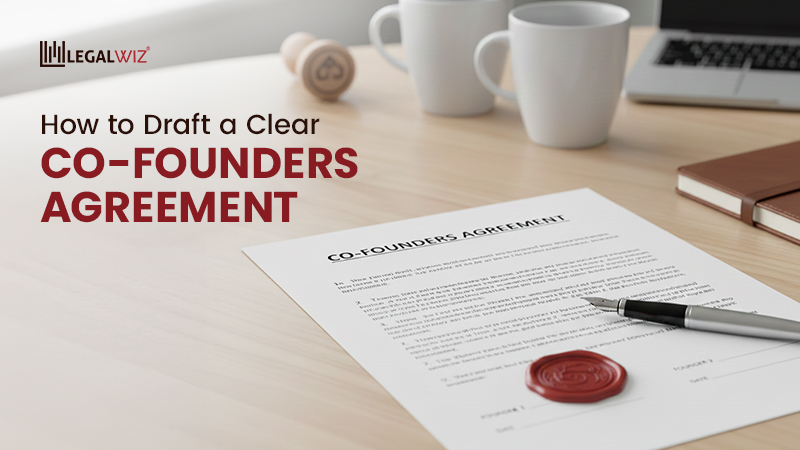Understanding Ordinary Resolutions & Special Resolutions
The clauses of the Articles of Association and the Memorandum of Association of companies define setting down the laws for regulating them and administering them. Nevertheless, company directors or shareholders may adopt resolutions to make such decisions or amend the constitution itself. It may be rendered at General Meetings (regular and special resolutions) or Board meetings.
Also Read: Understanding the Types and Duties of Directors
1. Legislative background
Section 114. — This provision coincides with Section 189 of the company act 1956, which provides that, if the vote cast in favor of the resolution exceeds the vote cast in the member’s motion against the decision, the resolution shall be an ordinary resolution. When adequately stated in the letter, the resolution called the General Assembly shall be unique.
2. Passing of ordinary resolution
An ordinary resolution is a majority vote-based ballot resolution. As set out in subparagraph (1) of paragraph 114, the resolution shall be a reasonable resolution if a duly provided notice of that resolution reaches, where necessary, votes cast in favor of the resolution.
The Chairman casting a vote shall be taken as ordinary resolution as exercised, to determine the issue. Electronic voting, polling, or other forms of voting allowed by hand or postal ballot can be a form of voting.
Only members who are eligible and are voting shall be included in the number of votes. Therefore, members who abstain or are not permitted to vote (whether under the terms of this Act) shall not be counted. Where the Act’s rules or articles provide for the adoption, at the general meeting or approval of the company, of a resolution by the company and authority without specifying the purpose of the decision to be made, an order is required.
However, either the organization or the member proposing a resolution can offer the notice needed.
3. Passing of special resolution
Important conditions for passing a special resolution are;
(a) The notice duly specified the intention to propose a resolution as a special resolution.
(b) Notice was given as required by the Act.
(c) The votes cast in favor of the resolution shall not exceed three times the total vote cast by members against the resolution. In other words, the resolution is adopted with 75% of the valid votes.
Voting may be by hand display, electronic ballot, poll, or any other permissible method or postal ballot. The number of votes of ‘entitled and voting’ representatives shall only be counted. Therefore, citizens who abstain or are not permitted to vote (whether or not under the terms of this Act) shall not be counted. Therefore, either the organization or the member proposing the resolution may provide the notification necessary.
4. Other types of resolutions
The provisions of the Act include the adoption of resolutions, which vary. For example, paragraph (6) of section 230 of the Act on the compromise agreement regime’s approval. This resolution requires the overwhelming support of three-fourths of the shared interest.
5. Process of passing the resolutions
The resolution as a ‘motion’ is proposed. Motion becomes a resolution only after the necessary majority of members adopt it. The mover’s motion should be signed in writing and put to the President’s vote at the conference. In the case of business meetings, only specific resolutions addressed by the agenda are submitted. Nonetheless, such motions that result from negotiations and may be allowed if the Act does not require a special resolution.
Secretarial Standard-2 Paragraph 7.1 stipulates that each resolution is introduced by one member and seconded by another one. The motion under consideration can be amended during the debate. An alteration is any change of a member’s essential motion until it is voted on and adopted. A Member who has not previously spoken on the main motion or has not previously moved an amendment may suggest an amendment, but a formal motion cannot be amended.
The Chairman can consider or reject an amendment for different reasons such as inconsistency, duplication, irrelevance, etc. When an amendment is passed, the key motion is adopted and seconded and the discussion on the amendment begins. Anyone who has already spoken on the main motion may speak on amendment, but nobody is permitted to talk on the same amendment twice. After detailed consideration of the proposal, it will be put to the ballot. When the amendment is approved, it shall be included in the central motion form.
The revised resolution, known as “substantive motion,” is then brought before the board. When the amendment is rejected, the main motion can be debated again, but the initial motion cannot be replicated if the substantive motion is voted on and defeated. There can be a variety of changes to the main motion. One amendment can also be shifted to change another provision, but it can only be changed once.
Also Read: A brief understanding of a private limited company directors
If a sufficient number of amendments are added to the main motion, the original motion action may be removed by consensus and a new motion may be adopted that incorporates all of the amendments. The President has the power to determine the order in which the various amendments will be considered.
Key Differentiation between Ordinary Resolution and Special Resolution
The significant differences between resolution passed and special resolution is described as follows:
- Ordinary Resolution is one in which the general meeting requires a simple majority to move the resolution. Special resolution means a resolution that needs a clear majority to approve the resolution at the general meeting.
- Only in certain situations, it is mandatory to file a copy of the ordinary resolution with the Registrar signed by the organization’s offices. A printed or handwritten copy of a special resolution, which includes the company official’s signature, must be sent to the Company Registrar (ROC) within 30 days.
- The ordinary resolution requires the approval of at least 51 percent of members to accept the resolution. On the other hand, the special resolution needs at least 75% support for the resolution.
Conclusion
Meetings are held in a company to discuss and vote on the specific proposals put forward for the discussion. Resolutions are nothing more than the manifestation of the will of the company. Ordinary resolutions shall be necessary to transact the business apart from regular businesses. If the registered name is inaccurate or false or if the name of the company is changed as ordered by the Central Government etc. it shall be required to pass an ordinary resolution.
The subjects needed for Special Resolution are issues of sweat equity stock, change in terms of the Association Memorandum, changes in articles of association, buying back stock or securities, changes in the things protected by the Prospectus, relocation of the company registered office, etc.

Jaya Ahuja
ACS Jaya Ahuja is an Associate member of Institute of Companies Secretaries of India having good experience in legal and secretarial matters. She had written various articles and had done rigorous search on Companies Act 2013.







